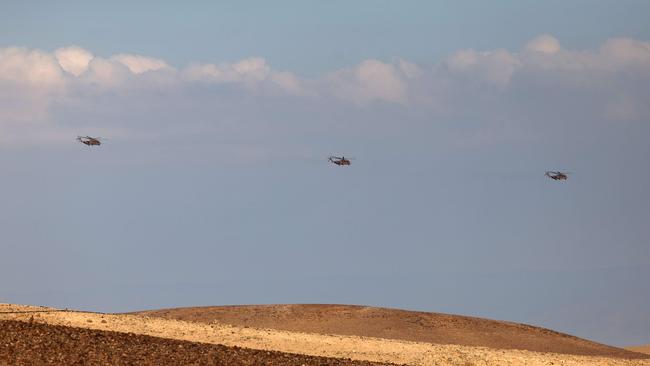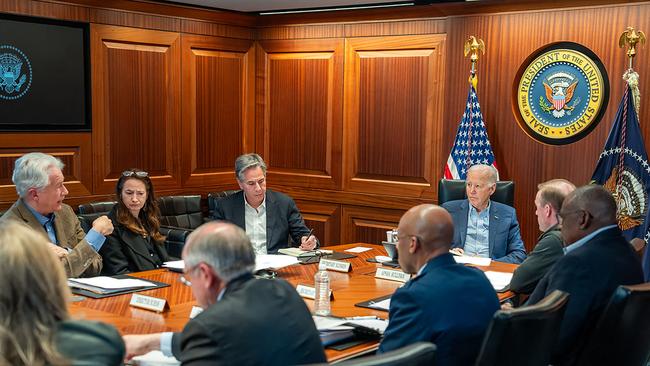
Many in Israel, along with some in the US, believe that the attack by Iran on Israel provides a unique opportunity to eliminate Iran’s nuclear capability before it is fully developed. But under President Biden, that is unlikely to happen.
In contrast, Trump claimed that Iran would never have attacked Israel, presumably because either he would have made it clear to Iran what the US/Israel anti-nuclear response would be to such an attack, or would have already eliminated Iran’s nuclear installations.
Fascinatingly, the Israelis have completely revamped the Joint Strike Flighter/F-35, which enabled it to play an important role in defending Israel against the weekend Iran missile attack. It is also essential in any Israel attempt to destroy Iran’s nuclear capacity.

Sadly, Australia’s JSF-F-35’s have not been subject to the Israel reconstruction.
According to the Jerusalem Post, Iran’s top nuclear facilities are at Fordow and Natanz.
Fordow’s main chamber is buried some 80 meters underground – a depth that only the 30,000-pound “bunker buster” bombs in the American arsenal could immediately destroy.
But even under the Trump administration, the US has always refused to provide Israel with such bunker busters. The bunker buster bombs could be delivered by the F-35, although it would be vulnerable on the return journey because it would probably need to be refuelled in the air.
One of the original reasons not to deploy the bunker buster bombs on Iran’s nuclear facilities was that both the US and Israel feared the enormous damage likely to be created in Israel by an attack similar to that which was launched at the weekend.

The combination of Israel, the US the UK and other allies thwarted that attack. The Israel/US hawks say that obstacle to an attack on Iran’s nuclear facilities, has now been removed – at least on present technology.
In addition, the US feared the disruption to world trade if the Red Sea was blocked. Again, that has already happened.
Of course, Israel does not need to entirely eliminate the Iran facility to render it useless. A repeated series of strikes could block Tehran’s access to electric power, bury its entrances and exits, and cut it off from the world.
I emphasise that the above comments are not an advocacy of such a strike, but rather to illustrate the debate taking place behind closed doors.
In Australia, the F-35 is in grave danger of being a flying coffin for pilots because much greater flying distances are involved therefore requiring more refuelling making the aircraft very vulnerable be because it can’t reach the heights of aircraft from China and Russia which would be able to shoot it down.
But the Middle East does not have the same distances and at this stage Iran’s air force consists mainly of older aircraft which don’t pose the same threat.
We are gradually learning some of the changes the Israelis made to the F35 to make it a very different and far more effective aircraft than that possessed by Australia.
The great drawback to Israel’s revamped F-35 was that its new capacities had not been tested in battle, but many may have been used against Hamas and Hezbollah in recent months and were certainly used effectively in the Iran direct attack on Israel.

The Israelis named their aircraft F-35I (for Israel) and attached the tag “Adir” to the revamped aircraft, which translates as “mighty” from Hebrew and is derived from the book of Psalms.
Initial modifications for the F-35I-Adir covered command, control, communications, computers, electronic warfare, and weapons integration.
The design of aircraft’s installations, power, and cooling were being modified to provide the ability to incorporate advanced weapons.
Israelis found that its F-35I Adir akin to a flying computer with its own language, the Israeli’s had to develop a language to enable their Adir aircraft to communicate with other Israeli aircraft.
The developer of the base F-35 Join Strike Fighter, Lockheed Martin uses maintenance as a generator of profits. Israel conducts its own maintenance and does not appear to have the same huge problems of lack of aircraft availability because of breakdowns which plague the US and countries like Australia.
If a missile is fired, the F-35I Adir can automatically detect where it came from and the pilot can automatically target that location. Communications links on the aircraft will allow it to gather information on hostiles even while it’s still on the ground.
The big defence difference between Australia and Israel is that Australia’s defence has been based on the assumption that an attack was not likely, and we could rely on the Americans. Israel relies on the Americans, but its base assumption is that it could be attacked at any time, and that charges the mindset.






The next president of the US, whether it be Joe Biden or Donald Trump, will face a nuclear bomb armed Iran with the rocket power to deliver it.